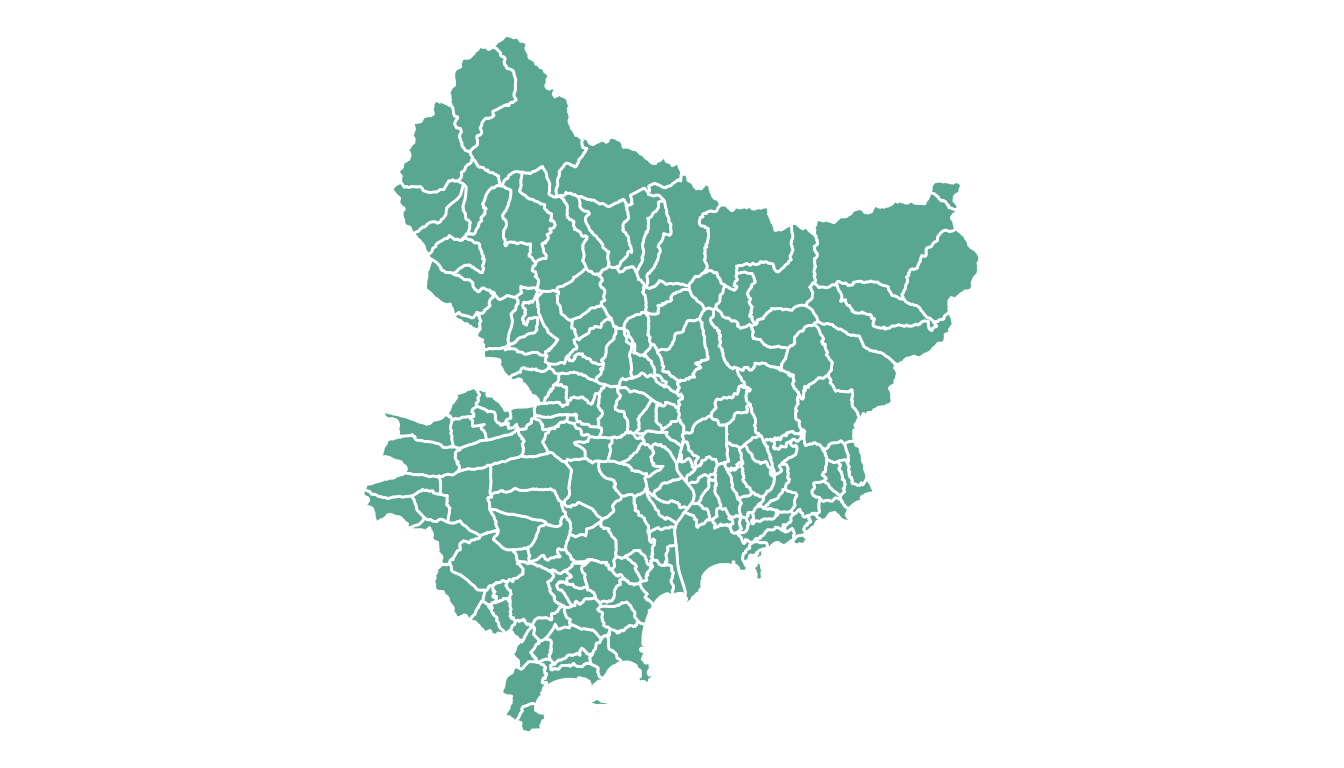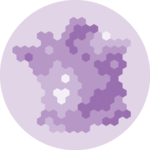If you did not find the geospatial data you need in existing R packages (see the map section), you need to find this information elsewhere on the web.
It will often be stored as a .geomJSON format. This post explains how to read it.
Note: if you found a shapefile, read this post instead.
Find and download a .geoJSON file
You need to dig the internet to find the geoJSON file you are interested in. For instance, this URL provides a file containing french region boundaries.
You can load it in R with:
# Let's read the jeoJson file that is stored on the web with the geojsonio library:
library(geojsonio)
spdf <- geojson_read("https://raw.githubusercontent.com/gregoiredavid/france-geojson/master/communes.geojson", what = "sp")That’s it! You now have a geospatial object called spdf. I strongly advise to read this post to learn how to manipulate it.
Just in case, here is how to plot it in base R and with ggplot2.
Plot it with base R
The basic plot() function knows how to plot a geospatial object. Thus you just need to pass it spdf and add a couple of options to customize the output.

# Select only the region #6
spdf@data$mystate = substr( spdf@data$code, 1, 2)
spdf_region_6 = spdf[ spdf@data$mystate == "06" , ]
# plot the selected are with sp
library(sp)
par(mar=c(0,0,0,0))
plot(spdf_region_6, col="grey")Plot it with ggplot2
It is totally possible (and advised imo) to build the map with ggplot2. However, ggplot2 takes as input data frames, not geospatial data.
The geospatial object thus needs to be transformed using the tidy() function of the broom package.
Once the data frame is created, it is plotted using the geom_polygon() function as described below.






